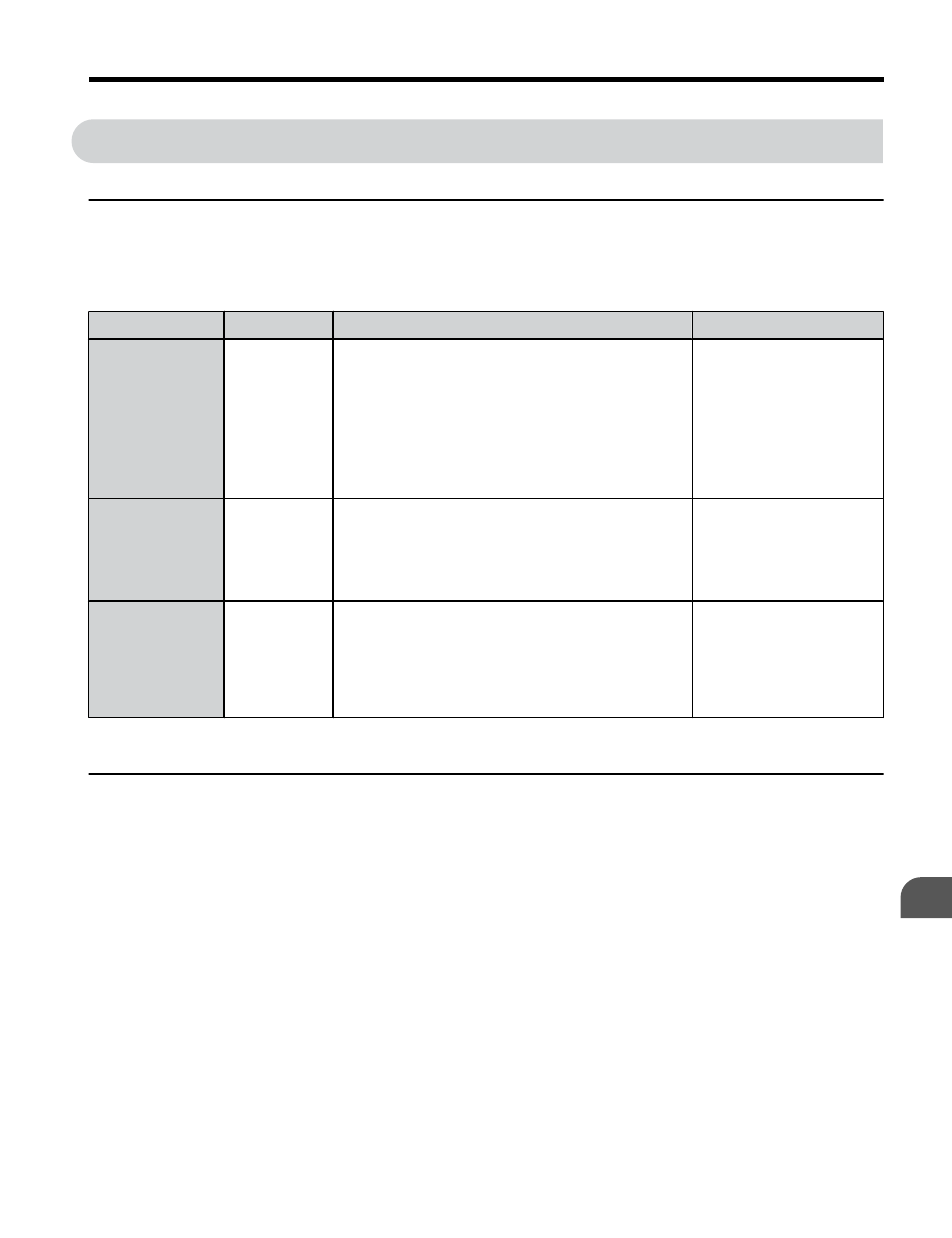7 auto-tuning, Types of auto-tuning, Before auto-tuning the drive – Yaskawa J1000 Compact Vector Control Drive User Manual
Page 113: Auto-tuning, Basic auto-tuning preparations

4.7
Auto-Tuning
u
Types of Auto-Tuning
There are three types of Auto-Tuning. Select the best type of Auto-Tuning for the application.
Refer to Auto-Tuning Procedure on page 115
.
Type
Setting
Application Conditions and Benefits
Control Mode
Rotational
Auto-Tuning
for V/f Control
T1-01 = 3
• Assumes the motor can rotate during the
Auto-Tuning process
• Improves torque compensation, slip
compensation, energy savings, and Speed Search
performance
• Should be performed when Speed Estimation
Type Speed Search or Energy Saving is used in
V/f Control
V/f Control
Rotational Auto-
Tuning
for OLV Control
T1-01 = 0
• Assumes the motor can rotate during the
Auto-Tuning process
• Achieves high-performance motor control and
should be performed whenever Open Loop
Vector Control is used
Open Loop Vector Control
Stationary Auto-
Tuning
for Line-to-Line
Resistance (V/f
and OLV
Control)
T1-01 = 2
For use when:
• The motor cable exceeds 50 m
• The motor cable length has been modified after
Auto-Tuning has been previously performed
• When motor capacity and drive capacity differ
V/f Control, Open Loop
Vector Control
Note:
Auto-Tuning cannot be performed on permanent magnet motors (IPM, SPM, etc.).
u
Before Auto-Tuning the Drive
Check the items below before Auto-Tuning the drive.
n
Basic Auto-Tuning Preparations
• Auto-Tuning automatically determines the electrical characteristics of the motor. This is
fundamentally different from other types of Auto-Tuning features used in servo systems.
• Auto-Tuning requires the user to input data from the motor nameplate. Make sure the
information written on the nameplate is available before Auto-Tuning the drive.
• For best performance, be sure the drive input supply voltage equals or exceeds the motor
rated voltage.
Note:
Performance can be enhanced by using a motor with a base voltage that is 20 V (40 V for 400 V class
models) lower than the input supply voltage. This may be of special importance when operating the
motor above 90% of base speed, where high torque precision is required.
4.7 Auto-Tuning
YASKAWA ELECTRIC TOEP C710606 47C YASKAWA AC Drive – V1000 Quick Start Guide
113
4
Start-Up Programming & Operation